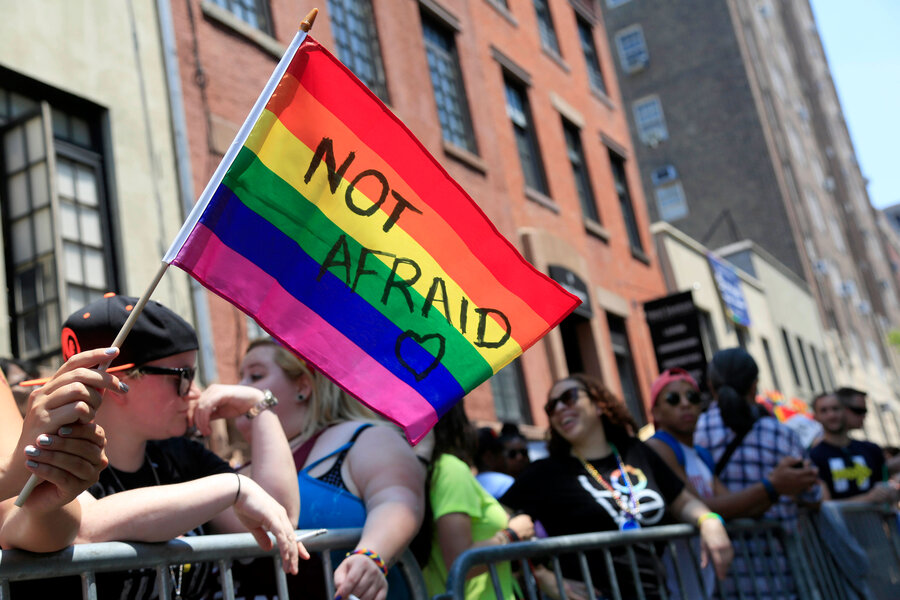CDC quantifies violence against LGB teens: Will awareness spur change?
Loading...
The US Centers for Disease Control (CDC) released its first study on the risks facing lesbian, gay, and bisexual (LGB) high school students in the United States on Friday.
After surveying more than 15,000 students and analyzing data from various school districts across the country from 2015, the CDC found that LGB students in grades 9 through 12 experience sexual and physical violence at a much higher rate than their heterosexual peers.
“The majority of sexual minority students cope with the transition from childhood through adolescence to adulthood successfully and become healthy and productive adults,” writes the CDC in the report. “However, this report documents that sexual minority students have a higher prevalence of many health-risk behaviors compared with nonsexual minority students.”
The findings are troubling, but advocates see quantification of the problem as the first step toward developing solutions.
“This is the first time we can say that nationwide these are consistent challenges faced by lesbian, gay and bi-youth,” David Bond of the Trevor Project, a national suicide-prevention organization focused on gay, lesbian, bisexual, and transgender youth, told the Associated Press.
Knowing such statistics can help families and schools recognize struggling teens and “foster resilience and safety for LGB youth,” Abbe Land of the Trevor Project writes for the Advocate.
Some of the findings of the report include:
- Some 18 percent of LGB students report being physically forced to have sex, compared to 5 percent of heterosexual students.
- LGB students are five times more likely to report illegal drug use than heterosexual students.
- A third of LGB students (34 percent) report being bullied at school and 28 percent report being bullied online. The same statistics for heterosexual students are 19 and 14 percent, respectively.
- More than 1 in 4 LGB students report attempting suicide in the last 12 months, compared to 1 in 16 heterosexual students who reported attempting suicide recently.
- Over 60 percent of LGB students and over 26 percent of heterosexual students report having felt sad and hopeless to the point where he or she stopped participating in routine activities.
Of the 15,600 students anonymously surveyed for the CDC’s study, 2 percent identified as gay or lesbian, 6 percent identify as bisexual, and 3 percent said they were unsure of their sexual identity. Given these numbers, the CDC suggests that 321,000 high school students last year were gay or lesbian and 964,000 were bisexual.
Although the CDC's findings underscore deep challenges, LGBT Americans have seen unprecedented progress over the last few years, between the legalization of gay marriage nationwide, President Obama’s designation of the Stonewall Inn as a national monument, and more.
“The progress for LGBT equality has been incredible, really,” Carolyn Oakley, a senior legislative counsel for the HRC told the Monitor in December. “It is hard to overshadow how far the movement for equality has come in such a short period of time.”






